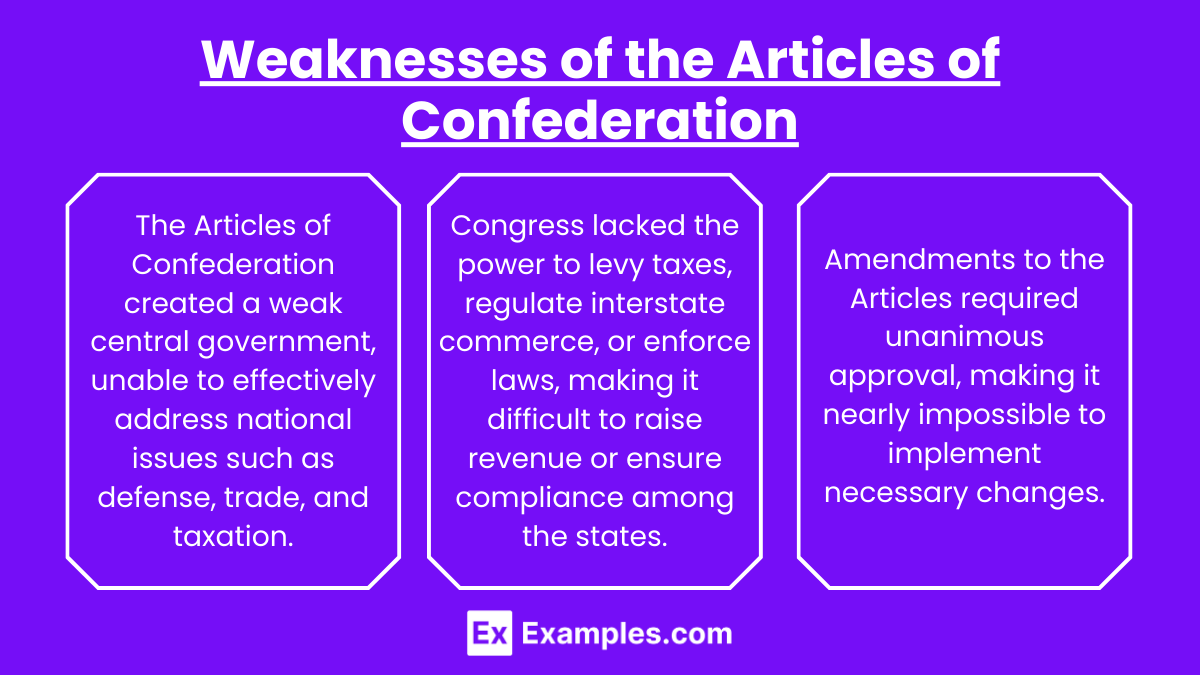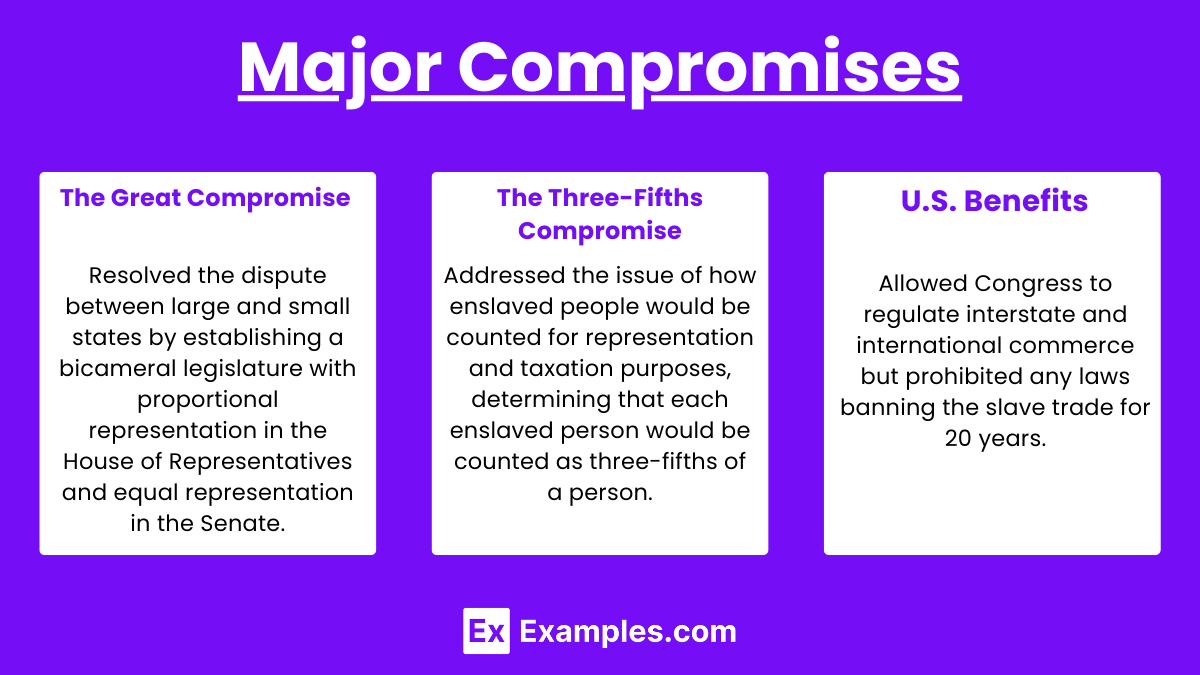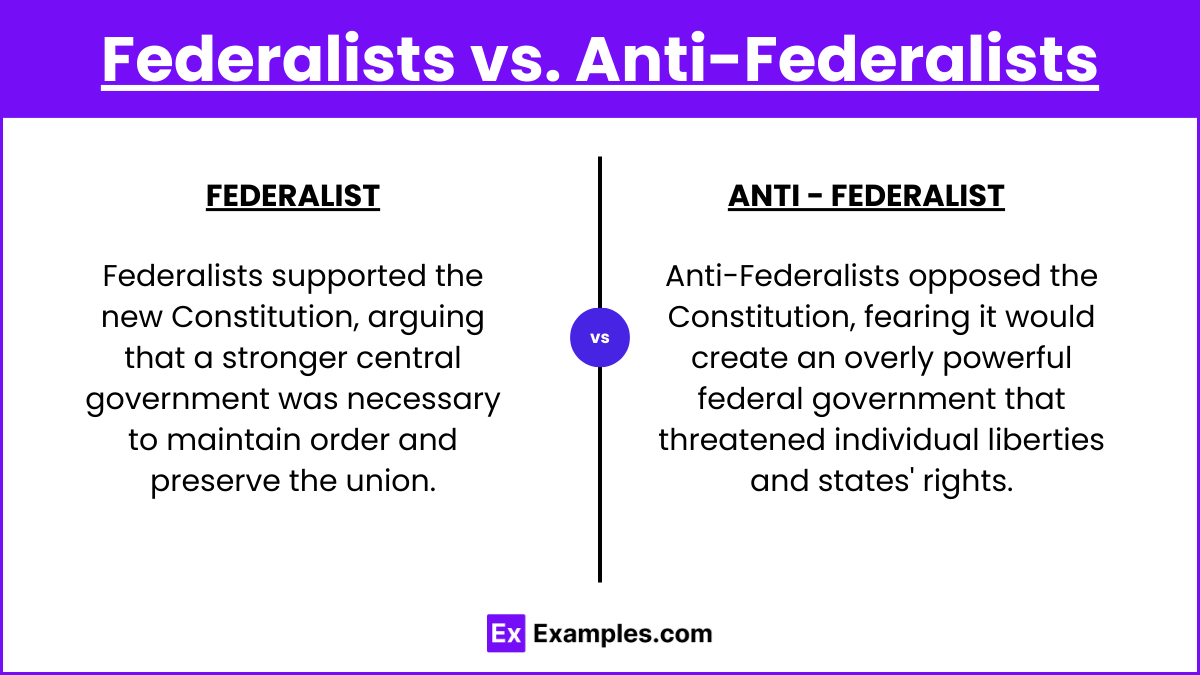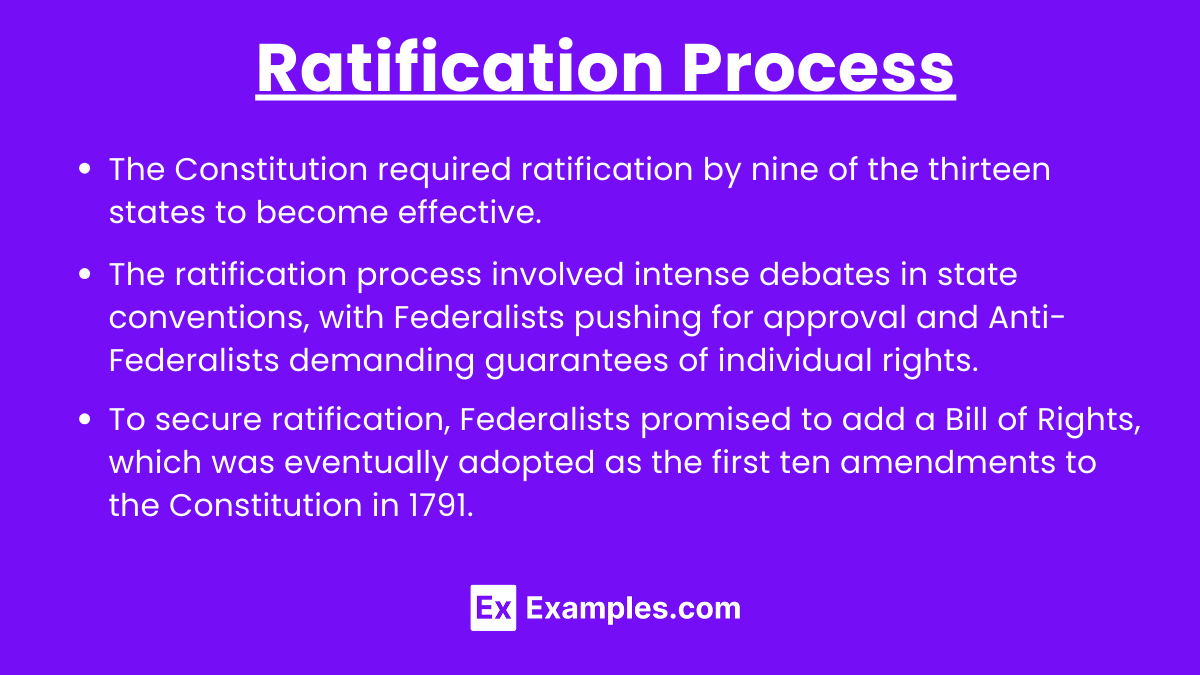In AP United States History, the Creation and Ratification of the Constitution is a pivotal topic that explores how the weaknesses of the Articles of Confederation led to the drafting of a new governing framework at the Constitutional Convention of 1787. The Constitution established a stronger federal government with a system of checks and balances. Its ratification involved intense debates between Federalists and Anti-Federalists, ultimately resulting in the adoption of the Bill of Rights to address concerns about individual liberties. This process shaped the foundation of American government and law.
Free AP United States History Practice Test
Learning Objectives
By studying the Creation and Ratification of the Constitution, you will gain an understanding of the weaknesses of the Articles of Confederation, the debates and compromises at the Constitutional Convention, and the importance of the Federalist and Anti-Federalist perspectives. You will explore how the Constitution was designed to balance power among the branches of government and between federal and state authorities. Additionally, you will learn about the significance of the Bill of Rights in securing the Constitution's ratification.
Weaknesses of the Articles of Confederation

The Articles of Confederation created a weak central government, unable to effectively address national issues such as defense, trade, and taxation.
Congress lacked the power to levy taxes, regulate interstate commerce, or enforce laws, making it difficult to raise revenue or ensure compliance among the states.
Amendments to the Articles required unanimous approval, making it nearly impossible to implement necessary changes.
The Constitutional Convention

The Constitutional Convention convened in Philadelphia in May 1787, with the original intent of revising the Articles of Confederation.
Delegates from 12 states (Rhode Island did not participate) attended, including prominent figures like George Washington, James Madison, Benjamin Franklin, and Alexander Hamilton.
The Convention quickly decided to scrap the Articles entirely and create a new constitution, leading to debates over representation, federalism, and the balance of power between the national and state governments.
Major Compromises

The Great Compromise (Connecticut Compromise): Resolved the dispute between large and small states by establishing a bicameral legislature with proportional representation in the House of Representatives and equal representation in the Senate.
The Three-Fifths Compromise: Addressed the issue of how enslaved people would be counted for representation and taxation purposes, determining that each enslaved person would be counted as three-fifths of a person.
The Commerce and Slave Trade Compromise: Allowed Congress to regulate interstate and international commerce but prohibited any laws banning the slave trade for 20 years.
Federalists vs. Anti-Federalists

Federalists supported the new Constitution, arguing that a stronger central government was necessary to maintain order and preserve the union.
Anti-Federalists opposed the Constitution, fearing it would create an overly powerful federal government that threatened individual liberties and states' rights.
The Federalist Papers, a series of essays written by Alexander Hamilton, James Madison, and John Jay, were published to persuade the public and state legislatures to support ratification.
Ratification Process

The Constitution required ratification by nine of the thirteen states to become effective.
The ratification process involved intense debates in state conventions, with Federalists pushing for approval and Anti-Federalists demanding guarantees of individual rights.
To secure ratification, Federalists promised to add a Bill of Rights, which was eventually adopted as the first ten amendments to the Constitution in 1791.
Examples
1. The Virginia Plan: Proposed a strong national government with three branches and a bicameral legislature based on proportional representation.
2. The New Jersey Plan: Countered the Virginia Plan by proposing a unicameral legislature with equal representation for each state, maintaining more power for state governments.
3. Shays' Rebellion (1786-1787): An armed uprising by Massachusetts farmers protesting economic injustices, highlighting the weaknesses of the Articles of Confederation and the need for a stronger federal government.
4. The Federalist No. 10: Written by James Madison, this essay argued for the Constitution's ability to control factions and prevent any one group from dominating the government.
5. The Bill of Rights: The first ten amendments to the Constitution, added to guarantee individual liberties and address Anti-Federalist concerns, ensuring the protection of rights such as freedom of speech, religion, and due process.
Multiple Choice Questions
1. Which of the following was a major weakness of the Articles of Confederation?
a) The ability to enforce laws
b) The power to levy taxes
c) The establishment of a federal court system
d) The creation of a strong executive branch
Answer: b) The power to levy taxes
Explanation: Under the Articles of Confederation, Congress lacked the authority to levy taxes, severely limiting the government's ability to raise revenue and leading to financial difficulties.
2. The Great Compromise resolved the issue of representation by:
a) Allowing states to vote on whether they wanted proportional representation or equal representation.
b) Creating a unicameral legislature with equal representation for all states.
c) Establishing a bicameral legislature with proportional representation in the House and equal representation in the Senate.
d) Counting each enslaved person as three-fifths of a person for representation purposes.
Answer: c) Establishing a bicameral legislature with proportional representation in the House and equal representation in the Senate.
Explanation: The Great Compromise created a bicameral legislature with the House of Representatives based on population and the Senate with equal representation, satisfying both large and small states.
3. The promise to add which of the following helped secure the ratification of the Constitution?
a) The Emancipation Proclamation
b) The Northwest Ordinance
c) The Bill of Rights
d) The Three-Fifths Compromise
Answer: c) The Bill of Rights
Explanation: The Bill of Rights, guaranteeing individual liberties, was promised by Federalists to address the concerns of Anti-Federalists and secure the ratification of the Constitution.


